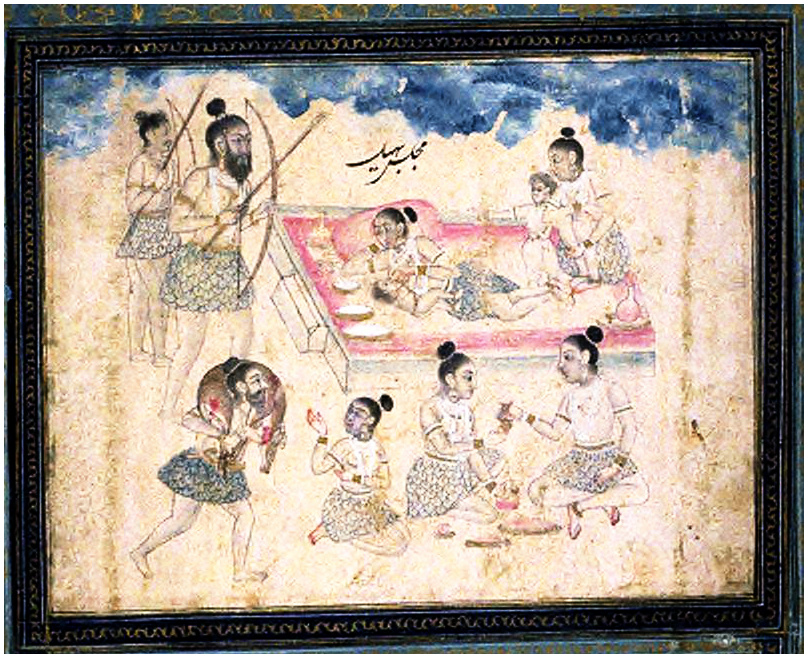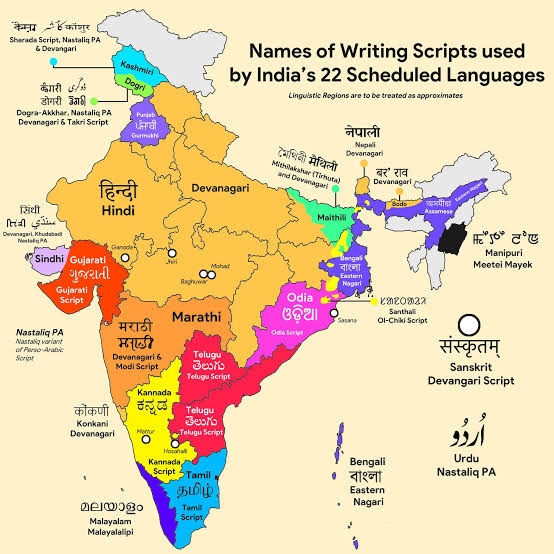|
Bhil Languages
The Bhil languages are a group of Indo-Aryan languages spoken by around 10.4 million Bhils in western and central India as of 2011. They constitute the primary languages of the southern Aravalli Range in Rajasthan and the western Satpura Range in Madhya Pradesh, northwestern Maharashtra, and southern Gujarat. According to the 52nd report of the commissioner for linguistic minorities in India, Ministry of Minority Affairs, Bhili is the most commonly spoken language of the district of Dadra and Nagar Haveli constituting 40.42% of its total population. Bhili speakers are also significant in the states of Gujarat (4.75%), Madhya Pradesh (4.93%) and Rajasthan (4.60%). See also * rathwi Bareli *Languages of India *Gujarati language *Gujarati people *Languages with official status in India *List of Indian languages by total speakers Relationship The Bhil languages form a link midway between the Gujarati language and the Rajasthani–Marwari languages. Grouped geographically, th ... [...More Info...] [...Related Items...] OR: [Wikipedia] [Google] [Baidu] |
Bhil People
Bhil or Bheel is an ethnic group in western India. They speak the Bhil languages, a subgroup of the Western Zone of the Indo-Aryan languages. As of 2013, Bhils were the largest tribal group in India. Bhils are listed as tribal people of the states of Gujarat, Madhya Pradesh, Chhattisgarh, Maharashtra and Rajasthan—all in the western Deccan regions and central India—as well as in Tripura in far-eastern India, on the border with Bangladesh. Bhils are divided into a number of endogamous territorial divisions, which in turn have a number of clans and lineages. Many Bhils now speak the dominant later language of the region they reside in, such as Marathi, Gujarati or a Bhili language dialect. Etymology Some scholars suggest that the term Bhil is derived from the word ''billa'' or ''billu'' which means bow in the Dravidian lexis. The term Bhil is used to refer to "various ethnic communities" living in the forests and hills of Rajasthan's southern parts and surrounding regions ... [...More Info...] [...Related Items...] OR: [Wikipedia] [Google] [Baidu] |
Rathwi Bareli
Rathwi Bareli is a Bhil language of India, spoken mainly in Gujarat. It is close to two other languages called Bareli, but not mutually intelligible with them. It has 81%–93% lexical similarity with Rathwi Bareli dialects, 67%–73% with Palya Bareli and 68%–79% with Pauri Bareli. See also *rathva koli *koli people * rathwi Bareli *Languages of India *Gujarati language *Gujarati people *Languages with official status in India *List of Indian languages by total speakers *Panchmahal district *Vadodara district Vadodara District also known as Baroda District is a district in the eastern part of the state of Gujarat in western India. The city of Vadodara (Baroda), in the western part of the district, is the administrative headquarters. Vadodara District ... References Languages of India Bhil Gujarati language {{IndoAryan-lang-stub ... [...More Info...] [...Related Items...] OR: [Wikipedia] [Google] [Baidu] |
Bhilali Language
Bhilali is a Bhil language The Bhil languages are a group of Indo-Aryan languages spoken by around 10.4 million Bhils in western and central India as of 2011. They constitute the primary languages of the southern Aravalli Range in Rajasthan and the western Satpura Range ... of India. Two varieties, Bhilali proper and Rathawi (Rathwi), are largely mutually intelligible. A third, Parya Bhilali, is more distant, but is treated as a dialect. References Languages of India Bhil {{IndoAryan-lang-stub ... [...More Info...] [...Related Items...] OR: [Wikipedia] [Google] [Baidu] |
Marwari Language
Marwari (मारवाड़ी, IAST: Mārwāṛī; also rendered as ''Marwadi'' or ''Marvadi'') is a Rajasthani language spoken in the Indian state of Rajasthan. Marwari is also found in the neighbouring states of Gujarat and Haryana, some adjacent areas in Eastern parts of Pakistan, and some migrant communities in Nepal. With some 7.8 million or so speakers (ce. 2011), it is one of the largest varieties of Rajasthani. Most speakers live in Rajasthan, with a quarter-million in Sindh and a tenth of that number in Nepal. There are two dozen dialects of Marwari. Marwari is popularly written in Devanagari script, as are many languages of India and Nepal, including Hindi, Marathi, Nepali, and Sanskrit; although it was historically written in Mahajani, it is still written in the Perso-Arabic script by the Marwari minority in Eastern parts of Pakistan (the standard/western Naskh script variant is used in Sindh Province, and the eastern Nastalik variant is used in Punjab Prov ... [...More Info...] [...Related Items...] OR: [Wikipedia] [Google] [Baidu] |
Bhili Language
Bhili (Bhili: ), , is a Western Indo-Aryan language spoken in west-central India, in the states of Rajasthan, Gujarat, Maharashtra, and Madhya Pradesh. Other names for the language include Bhagoria and Bhilboli; several varieties are called Garasia. Bhili is a member of the Bhil languages, which are related to Gujarati and Rajasthani. The language is written using the Devanagari script. Bhili has no official status in India. Phonology Consonants * may also be heard as in free variation. * occurs in loanwords from Persian and Hindi. * is heard as an allophone of preceding . Vowels * Vowels can also be heard as . * is borrowed from Hindi. * may also be heard as in final position. * Further reading * Bodhankar, Anantrao. ''Bhillori (Bhilli) – English Dictionary''. Pune: Tribal Research & Training Institute, 2002. * Jungblut, L. ''A Short Bhili Grammar of Jhabua State and Adjoining Territories''. S.l: s.n, 1937. * Thompson, Charles S. ''Rudiments of the Bhili ... [...More Info...] [...Related Items...] OR: [Wikipedia] [Google] [Baidu] |
Magari Language
The Magari language, ''Magra ki Boli'', is a variety of Bhil Bhil or Bheel is an ethnic group in western India. They speak the Bhil languages, a subgroup of the Western Zone of the Indo-Aryan languages. As of 2013, Bhils were the largest tribal group in India. Bhils are listed as tribal people of the s ... in India. ''Ethnologue'' lumps it under Bhil proper. References Languages of India {{IndoAryan-lang-stub ... [...More Info...] [...Related Items...] OR: [Wikipedia] [Google] [Baidu] |
Bhilori Language
Bhilori is a Bhil language of India. There are 100,000 speakers of each of the two varieties, Dungra and Noiri, which are highly intelligible with each other. Noiri is one of the Scheduled Tribes of India. References Languages of India Bhil {{IndoAryan-lang-stub ... [...More Info...] [...Related Items...] OR: [Wikipedia] [Google] [Baidu] |
Wagdi Language
Wagdi is a Bhil language of India spoken mainly in Dungarpur and Banswara districts of Southern Rajasthan Rajasthan (; lit. 'Land of Kings') is a state in northern India. It covers or 10.4 per cent of India's total geographical area. It is the largest Indian state by area and the seventh largest by population. It is on India's northwestern s .... Wagdi has been characterized as a dialect of Bhili. There are four dialects of Wagdi: Aspur, Kherwara, Sagwara and Adivasi Wagdi. Grammar Nouns *There are two numbers: singular and plural. *Two genders: masculine and feminine. *Three cases: simple, oblique, and vocative. Case marking is partly inflectional and partly postpositional. *Nouns are declined according to their final segments. *All pronouns are inflected for number and case but gender is distinguished only in the third person singular pronouns. *The third person pronouns are distinguished on the proximity/remoteness dimension in each gender. *Adjectives are ... [...More Info...] [...Related Items...] OR: [Wikipedia] [Google] [Baidu] |
Bauria Language
Bauria is a Bhil language The Bhil languages are a group of Indo-Aryan languages spoken by around 10.4 million Bhils in western and central India as of 2011. They constitute the primary languages of the southern Aravalli Range in Rajasthan and the western Satpura Range ... of India. Bauria, Wagdi, and Vaghri are variants of the same name. It's not clear how many languages they are. References Languages of India Bhil {{ie-lang-stub ... [...More Info...] [...Related Items...] OR: [Wikipedia] [Google] [Baidu] |
Rajasthani–Marwari
The Indo-Aryan languages (or sometimes Indic languages) are a branch of the Indo-Iranian languages in the Indo-European language family. As of the early 21st century, they have more than 800 million speakers, primarily concentrated in India, Pakistan, Bangladesh, Nepal, Sri Lanka, and Maldives. Moreover, apart from the Indian subcontinent, large immigrant and expatriate Indo-Aryan–speaking communities live in Northwestern Europe, Western Asia, North America, the Caribbean, Southeast Africa, Polynesia and Australia, along with several million speakers of Romani languages primarily concentrated in Southeastern Europe. There are over 200 known Indo-Aryan languages. Modern Indo-Aryan languages descend from Old Indo-Aryan languages such as early Vedic Sanskrit, through Middle Indo-Aryan languages (or Prakrits). The largest such languages in terms of first-speakers are Hindi–Urdu (),Standard Hindi first language: 260.3 million (2001), as second language: 120 million (1999). Urdu ... [...More Info...] [...Related Items...] OR: [Wikipedia] [Google] [Baidu] |
List Of Indian Languages By Total Speakers
India is home to several hundred languages. Most Indians speak a language belonging to the families of the Indo-Aryan branch of Indo-European (c. 77%), the Dravidian (c. 20.61%), the Austroasiatic ( Munda) (c. 1.2%), or the Sino-Tibetan (c. 0.8%), with some languages of the Himalayas still unclassified. The SIL Ethnologue lists 415 living languages for India. Overview India does not have a national language. However, Rule 1976 (As Amended, 1987) of the Constitution of India, mandates Hindi and English as the "Official Languages" required "for Official Purpose of the Union." Business in the Indian parliament is transacted in either Hindi or in English. English is allowed for official purposes such as parliamentary proceedings, judiciary, communications between the Central Government and a State Government. States within India have the liberty and powers to select their own official language(s) through legislation. In addition to the two Official Languages, the constitution rec ... [...More Info...] [...Related Items...] OR: [Wikipedia] [Google] [Baidu] |
Languages With Official Status In India
There is no national language in India. However, article 343(1) of the Indian constitution specifically mentions that, "The official language of the Union shall be Hindi in Devanagari script. The form of numerals to be used for the official purposes of the Union shall be the international form of Indian numerals," while the clause 3 of Official Languages Act, 1963 mentions the, "Continuation of English Language for official purposes of the Union and for use in Parliament", thus denoting Hindi and English as the official languages of the Union. Business in the Indian parliament can only be conducted in Hindi or in English. English is allowed to be used in official purposes such as parliamentary proceedings, judiciary, communications between the Central Government and a State Government. There are various official languages in India at the state/territory level. States within India have the liberty and powers to specify their own official language(s) through legislation. In additi ... [...More Info...] [...Related Items...] OR: [Wikipedia] [Google] [Baidu] |




